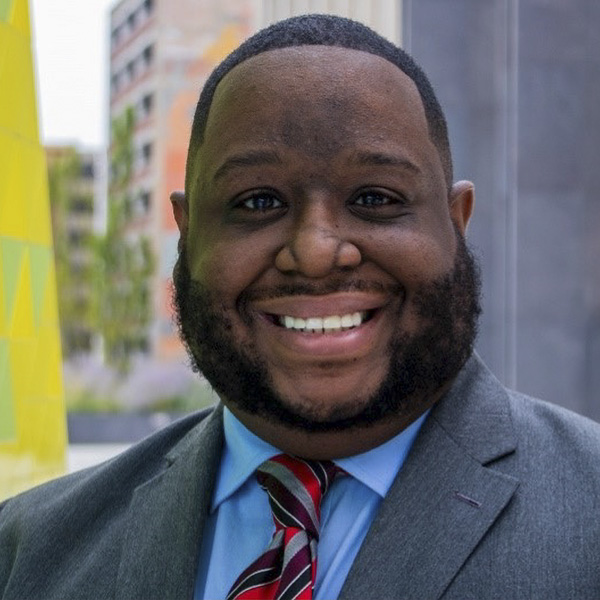LaMar is an Indy native and an award-winning public relations practitioner. He began his career as a TV news reporter, working across the country in Illinois, Texas, and Indiana. With that experience, LaMar became a skilled PR and Communications professional serving in corporate, non-profit, and government sectors. Now, he serves as CEO of the Holliday Collaborative Agency, and the President of the Kennedy King Neighborhood Association.
Still We Reach: Indy Honors the Legacy of MLK and Robert Kennedy
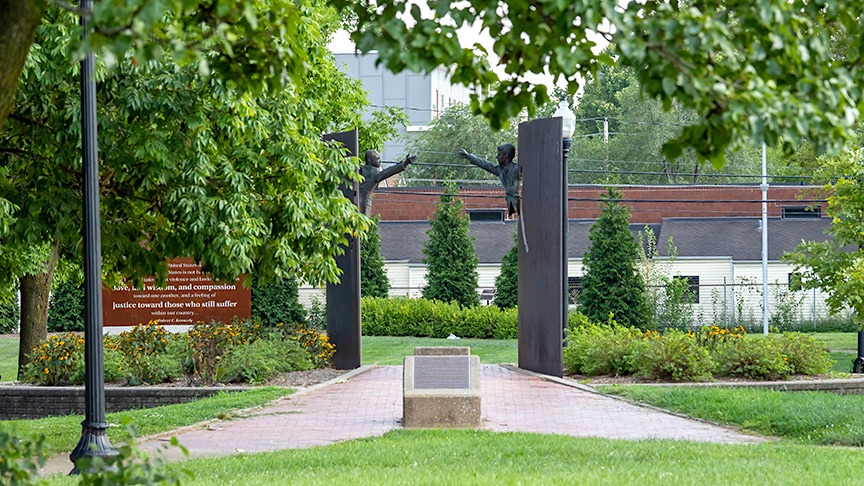
At the intersection of equality and civil rights, you’ll find a fitting monument tucked away in a quiet Indianapolis park. The Landmark for Peace memorial is a striking statue that honors two of America’s most influential leaders: Senator Robert Kennedy and Dr. Martin Luther King, Jr.
Dr. King and Senator Kennedy dedicated their lives to civil rights and the fight for social justice—until the very day they were assassinated. The Landmark for Peace memorial symbolizes that ongoing struggle, as King and Kennedy desperately reach out to each other. The hands of the statues will never quite touch, but the meaning is in trying anyway.
This theme of “Still We Reach” acknowledges the fact that despite the progress we’ve made, there’s still a long way to go to achieve equality for all. Today, the monument stands tall near the corner of 17th and Broadway, marking the spot where Kennedy spoke on the night of King’s assassination.
When I was looking to buy a home in 2016, all I knew was that I wanted to live in a tight-knit community close to downtown. So, when I learned the story behind the Kennedy-King neighborhood, I was inspired to do my homework.
In doing so, I discovered the rich, sacred history of the Kennedy-King neighborhood—and the commemorative events they host every April 4th.
The Landmark for Peace is a tribute to Martin Luther King, Jr.’s vision.
On April 4, 1968, Dr. Martin Luther King, Jr. was assassinated at the Lorraine Motel in Memphis, Tennessee. More than 460 miles away in Indianapolis, Senator Robert F. Kennedy broke the news to the nation.
At the time, Kennedy was traveling the country on his presidential campaign. But when he learned of Dr. King’s assassination, Kennedy instead delivered a passionate, impromptu speech about King’s fight for justice. He spoke about the importance of nonviolence and encouraged everyone to follow King’s example and share in the struggle for equality.
In the words of Robert F. Kennedy Human Rights, Kennedy’s impromptu speech was “one of American history’s most potent addresses.” King’s assassination led to riots all across the country, but Indianapolis remained calm, which many attribute to Kennedy’s inspiring words. Unfortunately, Kennedy would also be assassinated on June 6 of that year—just two months after King’s death.
Nearly 30 years after the tragic loss of both Kennedy and King, the Indianapolis community decided to create a monument to their legacy. They conducted a nationwide search for the monument’s designer and eventually selected Greg Perry, a 33-year-old artist from Franklin, Indiana. Perry then designed the Landmark for Peace memorial that still stands today.
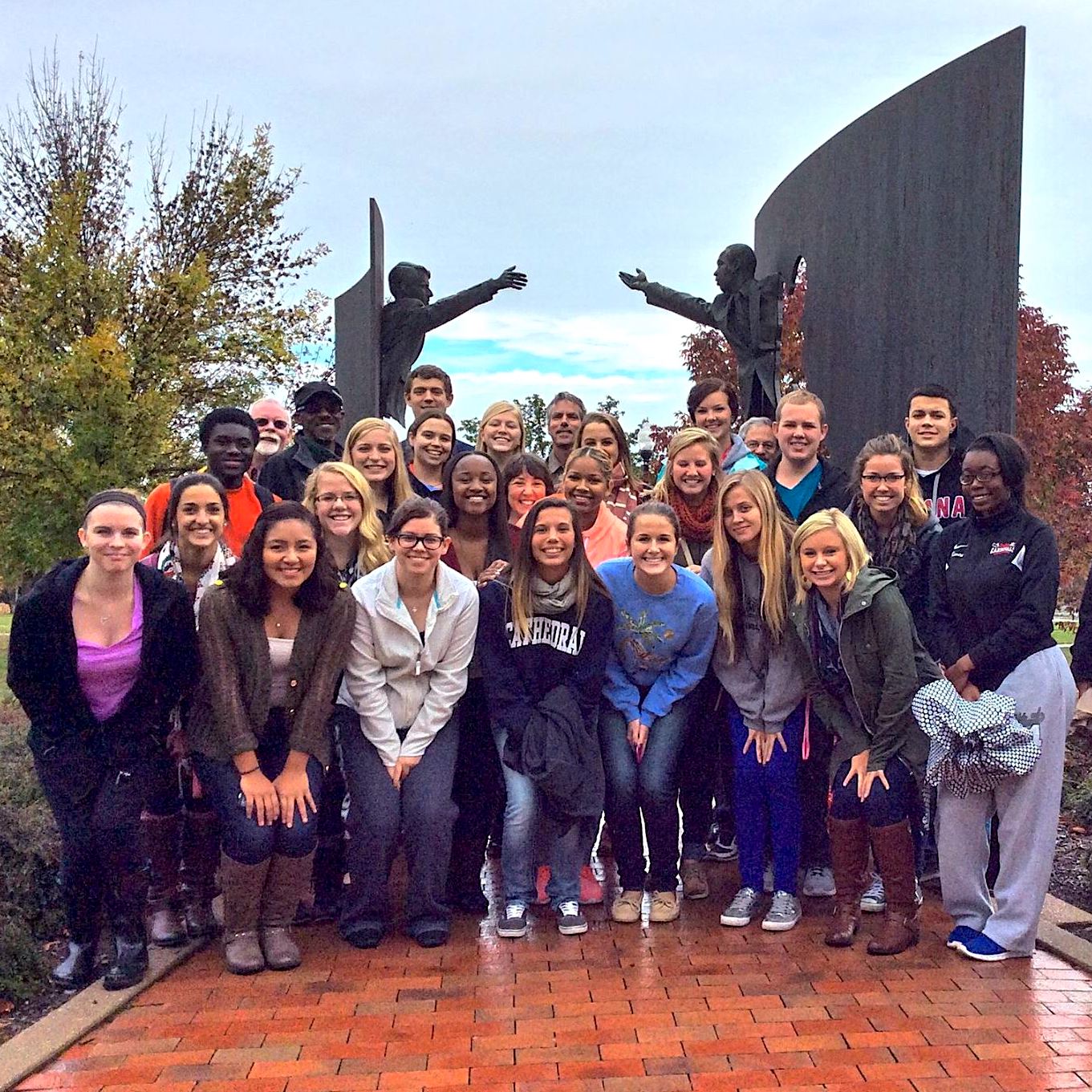
Photo courtesy of Kennedy-King Memorial Initiative
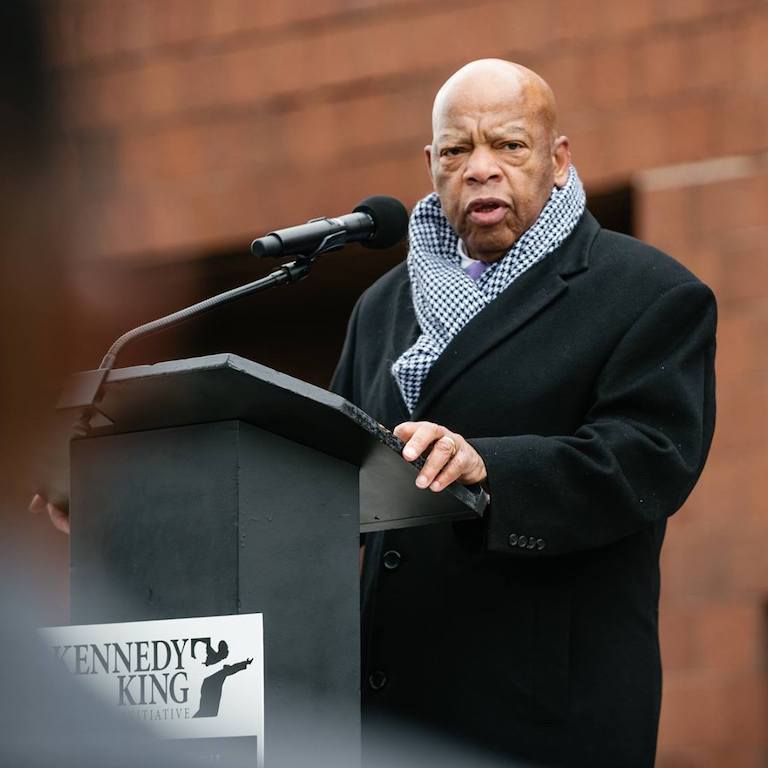
Photo courtesy of Kennedy-King Memorial Initiative
The Kennedy-King Memorial Initiative honors the occasion with a commemorative event each year.
April 4 remains a significant day in the history of the United States, as we remember the life and legacy of Martin Luther King, Jr. But the anniversary of his assassination also reminds us of the importance of continued advocacy for racial and social justice.
That’s why Indianapolis makes an effort to honor both King and Kennedy on April 4. Every year, the Kennedy-King Memorial Initiative hosts an inspiring commemorative event right in the heart of the Kennedy-King neighborhood.
The Landmark for Peace event creates a space for open dialogue and reflection on topics like equality, justice, and peace. These discussions cover the progress we’ve made over the past few decades, as well as the steps that still need to be taken to build a more equitable and just society for all. They also host a commemorative service that includes singing, spoken word tributes, and recitations of King’s historic speeches.
One of the most important aspects of this event is the diversity of voices represented. The event includes speakers from various backgrounds and perspectives—all united in their commitment to furthering King’s work. The event also provides an opportunity for local organizations and residents to affirm their own commitment to social justice here in Indy.
Senator Kennedy’s speech is a powerful message of love and justice.
Even decades later, Kennedy’s words still inspire people to stand up for social justice. Here’s the speech he gave on that tragic April 4 night:
“I have bad news for you, for all of our fellow citizens, and people who love peace all over the world, and that is that Martin Luther King was shot and killed tonight. Martin Luther King dedicated his life to love and to justice for his fellow human beings, and he died because of that effort.
“In this difficult day, in this difficult time for the United States, it is perhaps well to ask what kind of a nation we are and what direction we want to move in. For those of you who are black—considering the evidence there evidently is that there were white people who were responsible—you can be filled with bitterness, with hatred, and a desire for revenge. We can move in that direction as a country, in great polarization—black people amongst black, white people amongst white, filled with hatred toward one another.
“Or we can make an effort, as Martin Luther King did, to understand and to comprehend, and to replace that violence, that stain of bloodshed that has spread across our land, with an effort to understand with compassion and love.
“For those of you who are black and are tempted to be filled with hatred and distrust at the injustice of such an act, against all white people, I can only say that I feel in my own heart the same kind of feeling. I had a member of my family killed, but he was killed by a white man. But we have to make an effort in the United States, we have to make an effort to understand, to go beyond these rather difficult times.
“My favorite poet was Aeschylus. He wrote: ‘In our sleep, pain which cannot forget falls drop by drop upon the heart until, in our own despair, against our will, comes wisdom through the awful grace of God.’
“What we need in the United States is not division; what we need in the United States is not hatred; what we need in the United States is not violence or lawlessness; but love and wisdom, and compassion toward one another, and a feeling of justice toward those who still suffer within our country, whether they be white or they be black.
“So I shall ask you tonight to return home, to say a prayer for the family of Martin Luther King, that’s true, but more importantly to say a prayer for our own country, which all of us love—a prayer for understanding and that compassion of which I spoke.
“We can do well in this country. We will have difficult times; we’ve had difficult times in the past; we will have difficult times in the future. It is not the end of violence; it is not the end of lawlessness; it is not the end of disorder.
“But the vast majority of white people and the vast majority of black people in this country want to live together, want to improve the quality of our life, and want justice for all human beings who abide in our land.
“Let us dedicate ourselves to what the Greeks wrote so many years ago: to tame the savageness of man and make gentle the life of this world. Let us dedicate ourselves to that, and say a prayer for our country and for our people.”
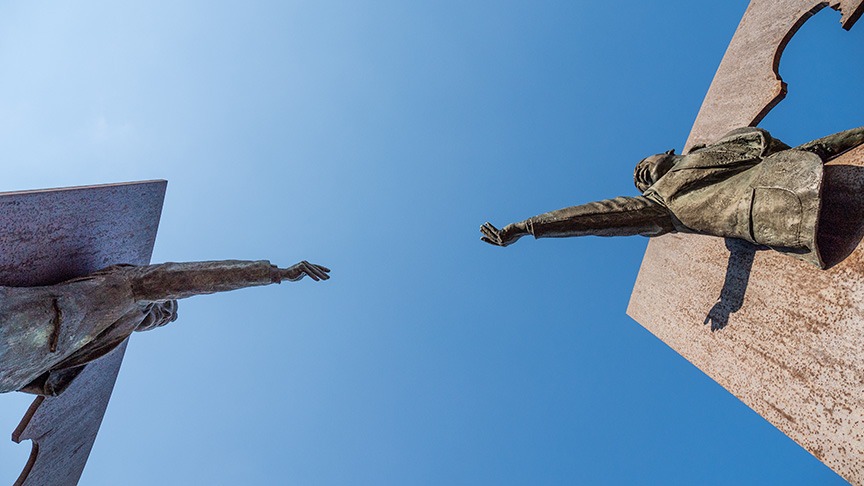
Everyone should take a moment to reflect at the Landmark for Peace.
On April 4, the Landmark for Peace commemorates the importance of Dr. King and Senator Kennedy’s work. But the memorial stands tall every day of the year, serving as an ongoing reminder that their work is not finished.
Monuments like the Landmark for Peace remind us of our history—and the importance of working toward a better future. They inspire us to reflect on ourselves and think about how we can help create a more equitable society. That’s why taking action is at the heart of the Landmark for Peace. Visitors are inspired to take an active role in society and become advocates for justice in their own communities.
When I visit the Landmark for Peace, I remember the importance of peaceful protest and political activism. Robert F. Kennedy’s speech helped calm a city on the brink of violence, and his words serve as a reminder of the power of compassion. As the statue reminds us, even when faced with violence and injustice, our voices can make a difference.


